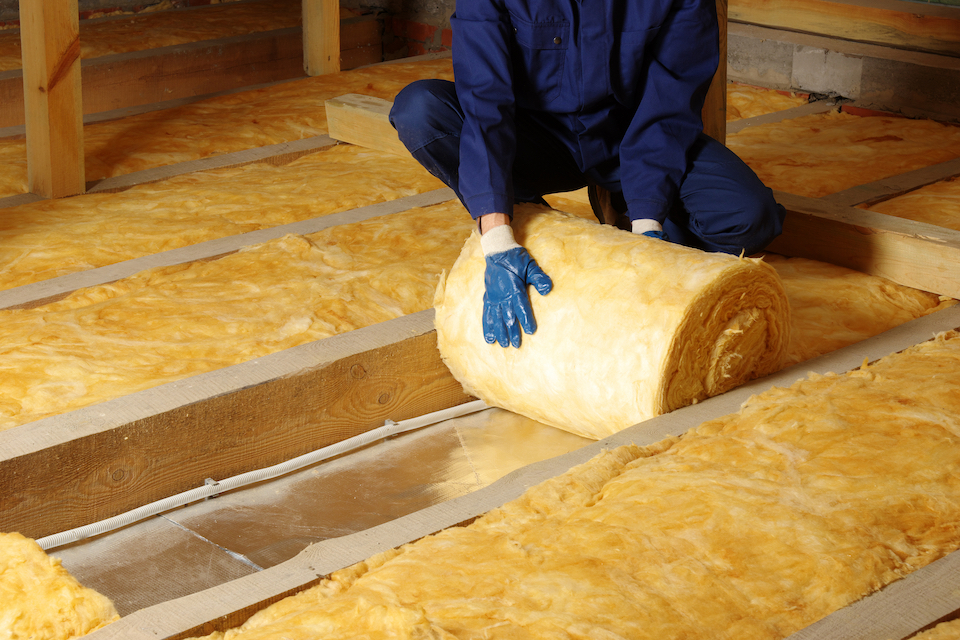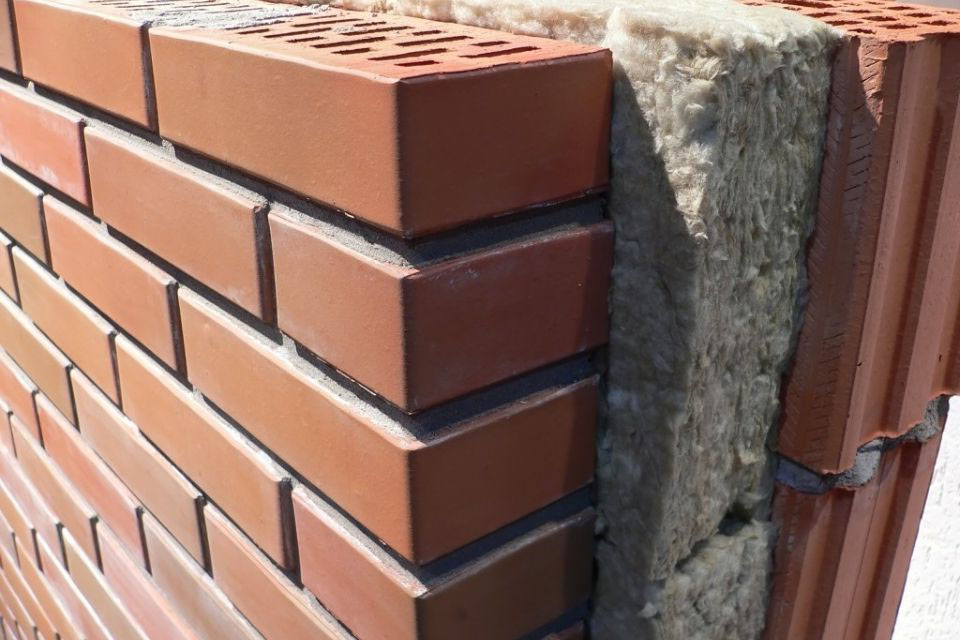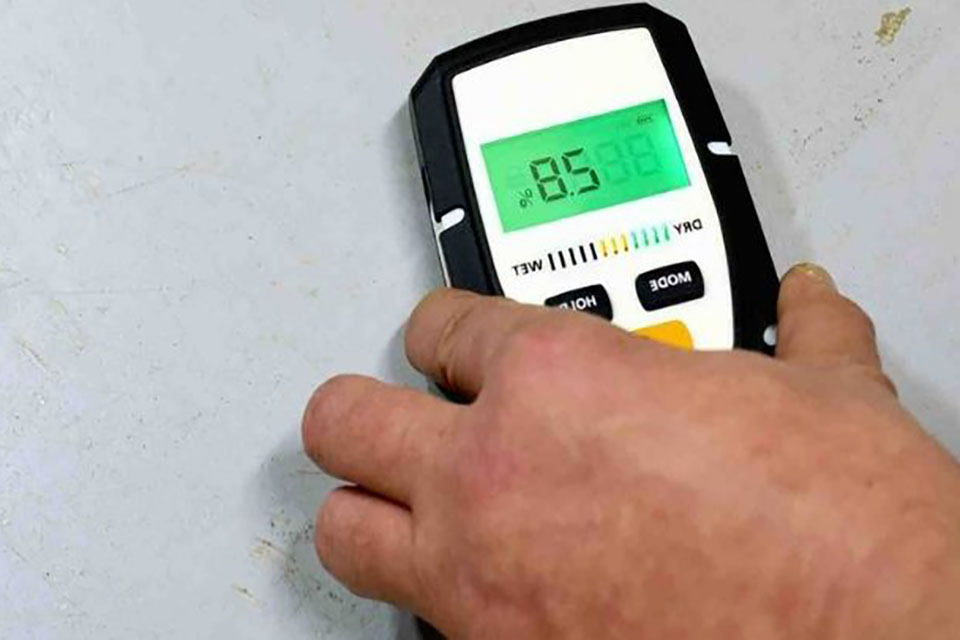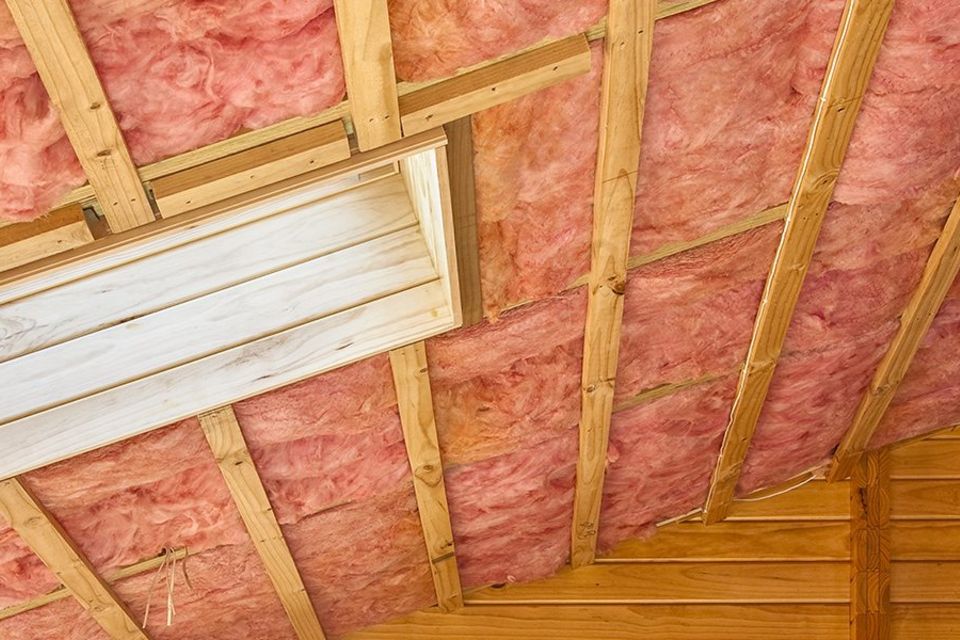How Much Does it Cost to Insulate a Conservatory Roof?
In most conservatories, the internal ceiling insulation is constructed up of layers of high-quality polished reflective film and thermal webbing. It tucks neatly between the ceiling beams.
This is then coated with plaster or a uPVC finish, thereby concealing the insulation and giving the ceiling a more typical appearance.
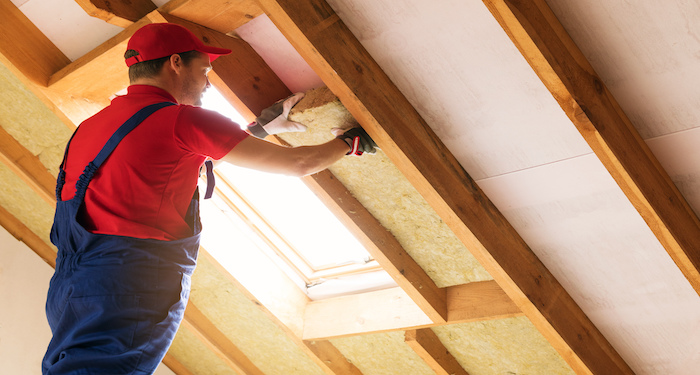
So, how much does it cost to insulate a conservatory roof?
The cost of installing insulation in your conservatory by a professional normally ranges from £1,200 - £4,000. This will be determined by the size and style of the room.
It's a good idea to get at least 3 quotes for any proposed work.
All materials and labour will be included in the quoted price. This will include plastering your ceiling as well as, in certain circumstances, painting.
There are different types of insulation methods for your conservatory, however, each of them tends to have a variety in prices as some are more expensive than others.
Conservatory Roof Insulation Prices
The table below will show the average conservatory insulation prices in the UK:
| Size of Conservatory | UPVC Insulation | Aluminium Panel Insulation | Plastered Insulation |
|---|---|---|---|
| 3m x 2m | £900 - £1,100 | £750 - £1,000 | £1,000 - £1,500 |
| 3m x 3m | £1,100 - £1,350 | £1,000 - £1,100 | £2,000 - £2,500 |
| 4m x 4m | £2,000 - £3,250 | £2,000 - £2,750 | £3,000 - £3,750 |
| 6m x 4m | £3,250 - £3,750 | £2,750 – £3,000 | £4,750 - £5,000 |
| 8m x 4/6m | £3,750 - £5,000 | £3,750 - £4,000 | £6,000 - £7,000 |
- How Much Does it Cost to Insulate a Conservatory Roof?
- What are the Supply Costs of Conservatory Insulation?
- What are the Additional Costs of Insulating a Conservatory?
- Tradesmen Costs for Insulating a Conservatory
- How Long Does It Take to Insulate a Conservatory?
- Types of Conservatory Insulation
- Benefits of Insulating a Conservatory
- How Conservatory Insulation Improves Energy Efficiency
- Should I Replace My Conservatory Roof Instead?
- How Much Does It Cost to Remove Conservatory Insulation?
- FAQs
- Sources
What are the Supply Costs of Conservatory Insulation?
If you are looking to install insulation in your conservatory by yourself, then you need to make sure you know how to do it correctly and the materials you need.
Therefore, we have created this section so you have an idea of how much the materials needed will cost to insulate your conservatory.
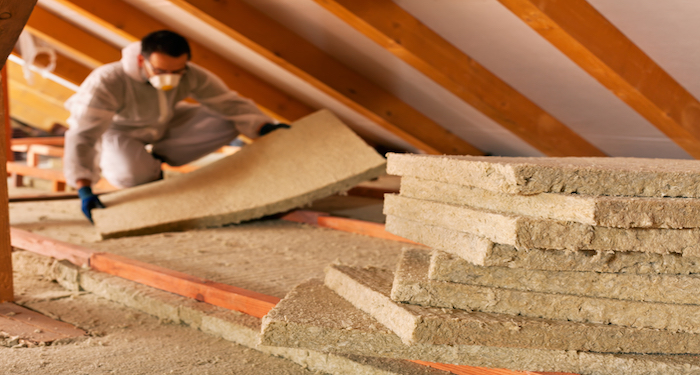
First, you will need timber batons which you can buy an individual for £2 - £5 depending on the size you want, or you can buy a bulk of timber for £40 - £55 depending on the size you want.
Then you will need self-drilling uPVC screws, which are £3 - £7 depending on how many you want in a pack. You can get 25 for less money or a couple of extra pounds to get 200.
For the insulation, you will need foil insulation, which is usually £27 - £60 depending on the quality and amount you will need for your conservatory.
A staple gun costs £15 - £60; however, some places rent staple guns, so if you don't want to buy one, the option to rent is available if you do some research.
Plasterboards, if needed, cost £6 – £10, then you will need to plaster, and bags of plaster usually cost £5 - £7 each, so you should figure out how much material you need before jumping into the supply.
You will need aluminium tape, which costs around £12 - £80 once again depending on the quality and amount you need will influence the price. Then the paint of your choice will cost around £20 - £70.
Overall, the materials for insulating a conservatory roof will cost between £250 - £300, depending on the size. The table below will include the materials as well as their prices.
| Material | Cost |
|---|---|
| Timber batons | £2 - £5 |
| Bulk of timber | £40 - £55 |
| Self-drilling UPVC screws | £3 - £7 |
| Foil insulation | £27 - £60 |
| Staple Gun | £15 - £60 |
| Plasterboards | £6 - £10 |
| Plaster | £5 - £7 |
| Aluminium tape | £5 - £7 |
| Paint | £20 - £70 |
What are the Additional Costs of Insulating a Conservatory?
The price of insulating a conservatory varies depending on how you want to insulate it, the size, and the type of conservatory you have. However, sometimes additional jobs are needed to complete the job, which means there will be additional costs.
Therefore, if you are planning on insulating your conservatory, you should have an open mind with your budget, as sometimes things don't go to plan.
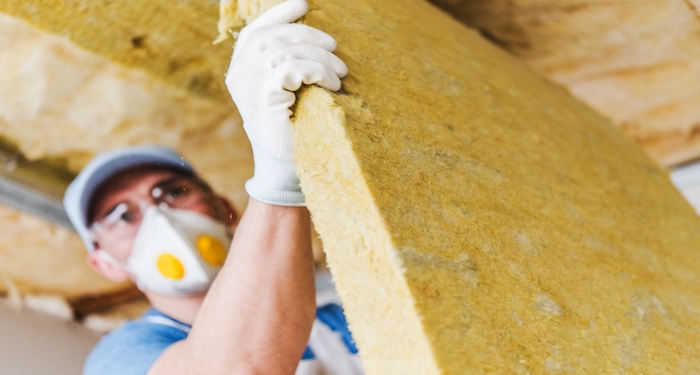
In this section of the article, we will go through the different additional jobs which may add to your overall cost.
Conservatory Cost
Building a conservatory is known to have a great impact on the value of your home. However, how much do they cost?
The cost of installing a conservatory varies depending on the materials used, as well as the kind and size of the conservatory.
- A little conservatory can cost roughly £5,000 - £10,000.
- A larger, luxury conservatory can cost up to £75,000 - £100,000.
You should think about how long it will take to create a new conservatory because this will help you figure out how much it will cost in the end. For example:
- A Victorian conservatory takes about 3 – 4 weeks
- An Edwardian Conservatory takes 2 – 3 weeks
- A P, L, and T shaped conservatory take 3 – 4 weeks
- A sunroom usually takes about 2 – 3 weeks
Painting and Decorating
A fresh coat of paint on the outside of your home will help it appear better and last longer. The completion of a home's work is indicated by the paint job. It gives the impression of completion and freshness.
After you have had your conservatory built, you may decide you want to hire a painter and decorator to come in and style it up. Here we will break down the prices and what to expect if you hire one.
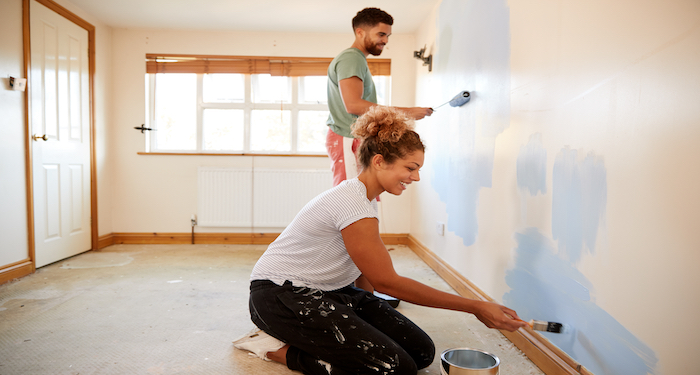
When redecorating, you should think about how much interior painting will cost for various jobs. Painting a room, for example, might cost anything from £180 - £250 for a small room to £600 - £800 for a large room.
You'll also need to include in the expense of painting and decorating other fixtures, such as skirting boards, which range from £180 - £350, and window painting, which costs between £400 - £1,500.
For significant decorating works such as painting or wallpapering many rooms, a usual quote for hiring a painter and decorator is from £100 - £300 per day. Because most tradesmen charge for their time, knowing how long a task will take to establish the ultimate pricing is also vital.
Underfloor Heating
As some conservatories are usually known for being cold, you may want to have underfloor heating installed to help keep it warm. Underfloor heating can cost as little as £30 - £100 for minor installations and as much as £10,000 for larger ones. The price will be determined by several criteria, including:
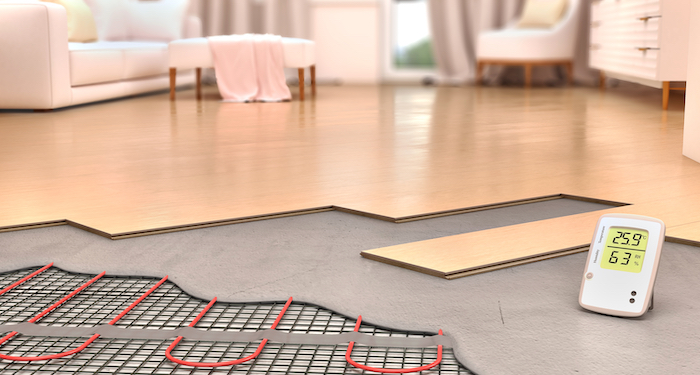
Underfloor heating systems are a terrific alternative for homes if they are well-considered and made with care as they give equally distributed warmth and comfort.
When renovating a 40m2 area, the typical cost of installing an electric/dry system is £2,900 - £3,100, £4,200 - £4,500 for a 60m2 area, and £5,700 - £5,900 for an 80m2 surface area.
Labourers may impose a minimum fee as an additional expense to your final bill or as a guaranteed charge in specific situations. In the case of being paid per day of labour, this would imply two days and six hours of work. You'd be charged the same as if it lasted two days and eight hours.
Whether you have an electric or wet underfloor heating system installed, the cost of installation may vary. Electric underfloor heating is generally less expensive than an electric system.
The entire surface area covered by underfloor heating is one of the most important cost variables. The more the supply and labour expenditures, the larger the floor size.
Plastering
Once you have had your conservatory insulated, you may need a plasterer to come in and fix up the walls of your conservatory. Here are the timescales and costs of hiring a plasterer.
Plastering a single wall will likely cost between £100 - £200. The cost of plastering a room could be anywhere between £300 - £1,200. If you only need a ceiling plastered, expect to pay between £300 - £500 for a medium-sized ceiling.
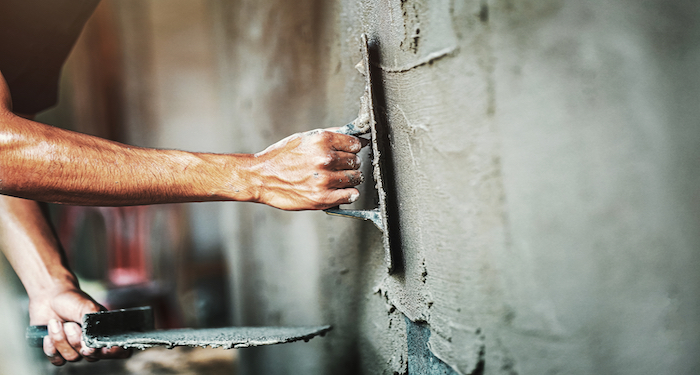
The size of the area that requires plastering, the state of the area, and whether plasterboards are required are all factors that might affect how long the plastering work takes.
You must also evaluate whether simply skimming is required, any waste removal jobs that may be required, and your location in the United Kingdom. The cost of repairing a damaged ceiling might range from £200 - £400, depending on the extent of the work required.
New Flooring
After insulating a conservatory, people decide that they want new flooring as they may have to redecorate after the process is done. The average cost of flooring installation will be between £400 - £1,000.
The cost of installing new flooring, on the other hand, will vary depending on the type of flooring you desire and the size of the room.
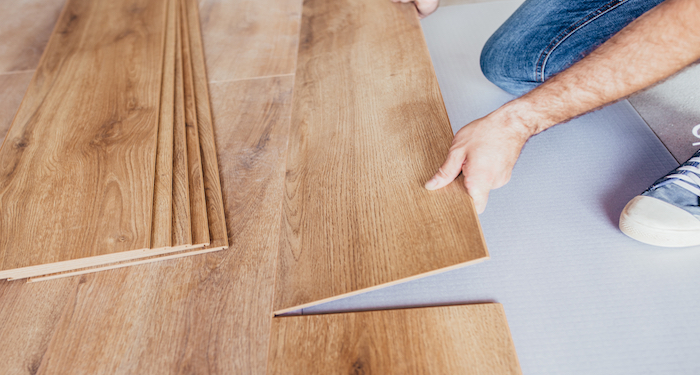
It might be difficult to select which flooring option is ideal for you because there are so many alternatives. You can choose between carpet, laminate, hardwood, vinyl, tiles, Karndean and parquet. Each one has a different price and is also a big decision to make for your conservatory.
Tradesmen Costs for Insulating a Conservatory
If you are debating insulating your conservatory professionally or DIY, then you should know the labour costs of insulating a conservatory, which is what we will talk about here. During this section, we will go through the average tradesmen costs without any supply or material costs.
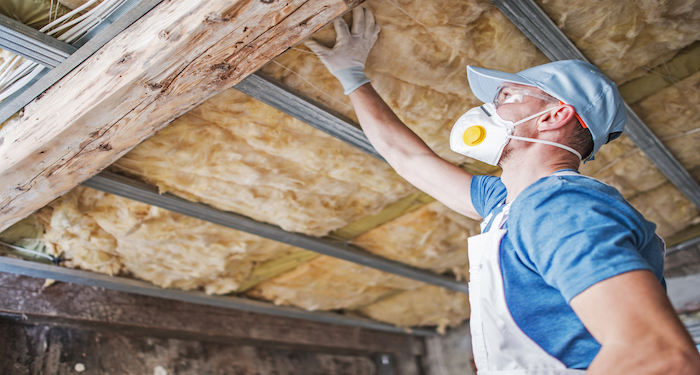
Insulating a conservatory room requires at least two people. The cost of insulating your conservatory will therefore typically range from £300 - £500 each day. It normally takes 1-3 days to complete.
The amount of time it takes is determined by the number of people working on the project, the type of conservatory being insulated, and the size of the conservatory.
How Long Does It Take to Insulate a Conservatory?
Your conservatory insulation installation timescale can depend on a variety of situations. Here we will go through how long it takes to insulate a conservatory so you know what to expect.
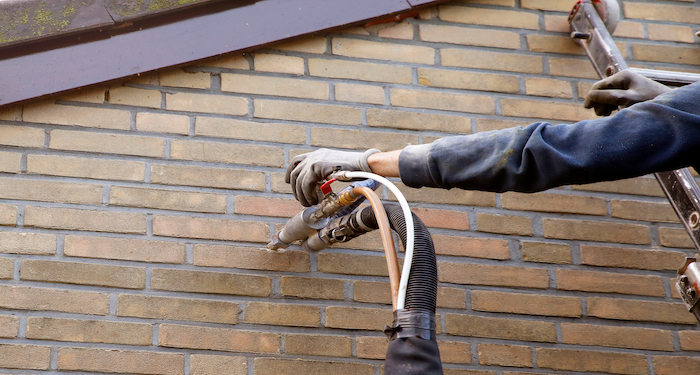
To make the conservatory insulation process quicker, it is good to check if your conservatory is in good condition. Check to see whether your conservatory is leaking, for example.
Although a decent ceiling will not be affected by a tiny amount of water, you should check for leaks before scheduling your installation. As if it leaks or has structural issues, it can delay the process and may require the installer to come back another day.
A tiny lean-to conservatory's insulation can normally be done in a day; however, a large Victorian conservatory's replacement can take up to three days or even longer.
Your installer will be able to give you an estimate of how long your installation will take once they know the size of your room.
Types of Conservatory Insulation
Your conservatory could be used in a variety of ways including:
- As a dining room
- A home office
- A playroom
- Or simply an extra living space
Internal conservatory insulation allows you to utilise it whenever and however you like!
Here, we'll go over the many forms of conservatory insulation so you can decide how to make your conservatory feel more like home and include the pros and cons of conservatory insulation.
When insulating a conservatory, only the roof, not the side windows, will be insulated, giving your new conservatory the appearance of an orangery with a high-performance insulated roof.
Conservatory roofs that are insulated can enhance U-ratings by a factor of ten. In both winter and summer, it will be much easier to control the heat in your new insulated conservatory, and your heating expenditures will be significantly reduced.
Plastered Conservatory Roof Insulation
Conservatory ceiling insulation with a plaster finish can give your conservatory a homey feeling of warmth in the winter while keeping the room bright and open in the summer.
A plaster finish ceiling will also give the impression that your conservatory is a fully integrated part of the house rather than an afterthought.
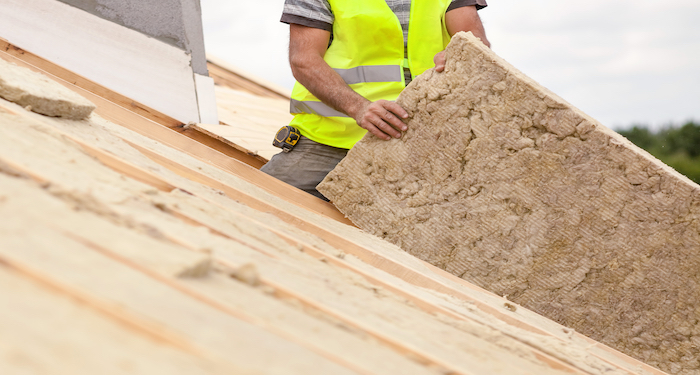
Your conservatory may become a comfortable and cheerful living place all year, no longer scorching in the summer and freezing in the winter.
The fully insulating panels are fitted inside your existing conservatory roof to offer a protective layer for effective climate management; there is no need to remove the original glass or polycarbonate roof, resulting in minimal fuss and clutter.
The insulation panels are made of a multi-layered, very thermally efficient material with a U-value of only 0.2, indicating that heat loss through the material is exceptionally low.
Despite adding insulation and a plaster finish, the original vaulted design of your conservatory roof will be preserved, and you will lose very little ceiling height.
Because your conservatory's original ceiling height will be preserved, structural changes will be minimal; nonetheless, the addition of the insulation layer will result in significant benefits for the entire space.
This upgrade also helps combat common conservatory issues, such as:
- Uncomfortable glare from the sun
- Fading of furniture and flooring
- Stifling heat in summer and chilly drafts in winter
- Excessive noise from rain or outside traffic
Pros
- Retains heat effectively in colder months
- Improves sound insulation
- Modern, clean plaster finish integrates with your home's interior
Cons
- Installation can be costly compared to temporary solutions
- Not a DIY-friendly job—requires skilled labour
- May require planning permission in listed or protected properties
uPVC Conservatory Roof Insulation
The new roofing material will be installed on the exterior roof. Depending on the insulation system employed, the glass panels may or may not be removed.
The main distinction is that the interior will be plastered rather than uPVC panelled. This will have a permanent roof and a plastered inside, like a conservatory—the choice with the most features.
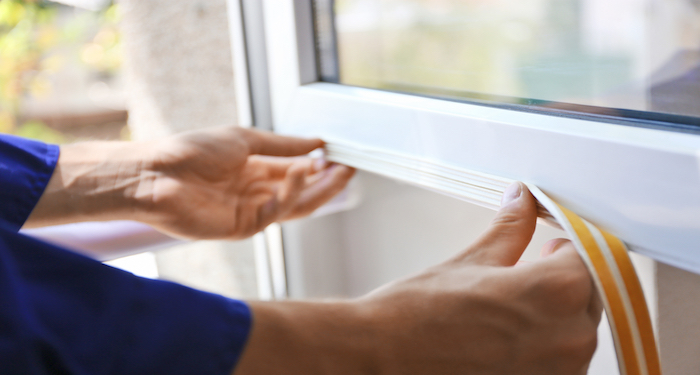
A fully insulated UPVC conservatory can be a fantastic home improvement. UPVC conservatory panels can keep the appearance of a light, open, and spacious area while also removing annoyances like high heat in the summer, extreme cold in the winter, and needless noise from heavy rain.
Conservatory insulation with a UPVC finish can provide the room with a clean, sharp, and modern look while keeping the room open and light-filled like a classic full glass conservatory.
The 'PVC' in UPVC stands for Polyvinyl Chloride; a chemical compound made up of chlorine, carbon, and hydrogen. Natural gas, common salt, and petroleum are all naturally occurring raw resources that are used to make these components.
The 'u' in front of PVC stands for 'unplasticised,' which means the material hasn't been softened using chemical plasticisers.
As UPVC is easily moulded under heat and metal rods can be included inside the structure when extra support is needed, UPVC is a frequent material used in the construction of conservatories.
The panelled ceiling will be fitted inside your current conservatory roof, concealing the insulation from view. Along with the insulation, the UPVC conservatory panels will help to reduce seasonal temperature variations.
This will ensuring that fewer heat escapes during the winter months (keeping the space nice and warm) and that heat does not build up inside during the summer months (keeping the room cool and comfortable).
Pros
- Improves temperature control all year round
- Low maintenance and easy to clean
- Bright, clean finish keeps conservatory feeling spacious
- Quick and easy to install
Cons
- Limited in aesthetic options compared to plastered finishes
- May not be as durable as other materials over the long term
- Can look less like a permanent room conversion
Aluminium Foil and Thermal Wadding Insulation
Your existing roof can be covered with aluminium panels. This is the most efficient method for insulating a roof. Insulated aluminium panels have high thermal efficiency and are simple to install over most existing roofs.
While placing panels over your roof may appear to be a 'fast and dirty solution to insulate your conservatory, the interior might still be plastered if desired, giving it a high-end appearance.
In hot weather, foil and wadding are useful because they keep heat from entering the building and do not degrade over time. In colder weather, you'll need to combine it with other treatments because it's not as effective.
Pros
- Quick and easy to install with minimal disruption
- Durable, moisture-resistant, and long-lasting
- Cost-effective option with a good return on investment
Cons
- Less visually appealing unless finished with plaster or panels
- Not as thermally efficient in winter without supplementary insulation
Polycarbonate Roof Upgrade
It may be possible to increase the glazing bars in your conservatory so that a thicker layer of polycarbonate may be installed, providing more insulation against the cold.
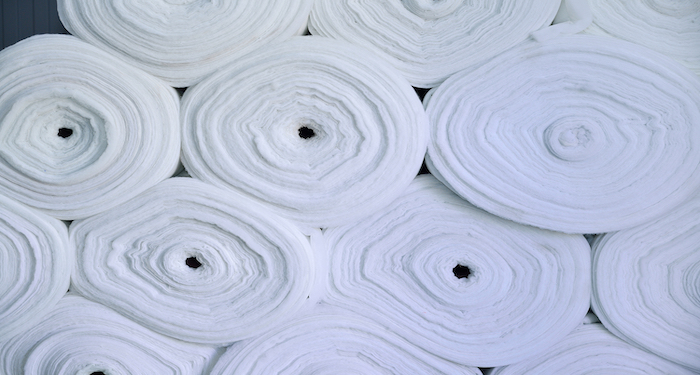
Under the existing structure, you can also add a thin layer of polycarbonate. However, because most polycarbonate roofs have a ten-year lifespan, you must consider whether it is a viable long-term solution. A polycarbonate roof, on the other hand, may not be able to remedy the building's condensation problems.
Adding a second layer of thin polycarbonate beneath your current one can also help to improve insulation. However, keep in mind that most polycarbonate roofs have a 10-year (or less) life expectancy, so you should consider whether keeping the original roof is the best option.
Pros
- Affordable compared to full roof replacement
- Quick to install
- Lightweight and low-maintenance
Cons
- Limited durability—lifespan usually 10 years or less
- Provides minimal improvement in insulation compared to other options
- Still prone to condensation and noise
Solar Control Film
If you want to preserve your conservatory's garden atmosphere, you might use a solar control film, which is a thin sheet of material that you place on the windows.
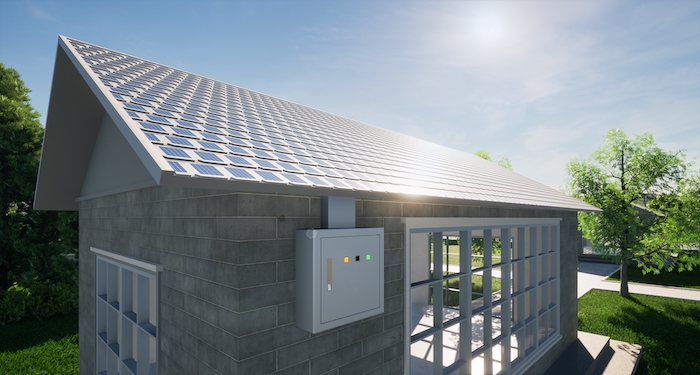
Because the film radiates and absorbs heat, the heat from the conservatory is retained. Glare and UV rays are also reduced by the coatings.
If you don't obtain high-quality window films, though, you risk them peeling after a few years. If you apply the film, certain manufacturers will void your guarantee. They're a great way to add extra insulation to a new conservatory roof.
Pros
- Cost-effective and easy to install
- Reduces glare and UV damage
- Helps retain heat in winter
- Preserves the open, garden-room feel
Cons
- May peel or bubble over time if poor quality
- Not as effective as other insulation methods
- Could void window warranty if not properly approved
Benefits of Insulating a Conservatory
Conservatories can increase a home's space, functionality, and value, making them an excellent investment for many homeowners. As a result, building a conservatory is more than a home renovation project; it's a way to improve your lifestyle while also saving money on energy expenses.
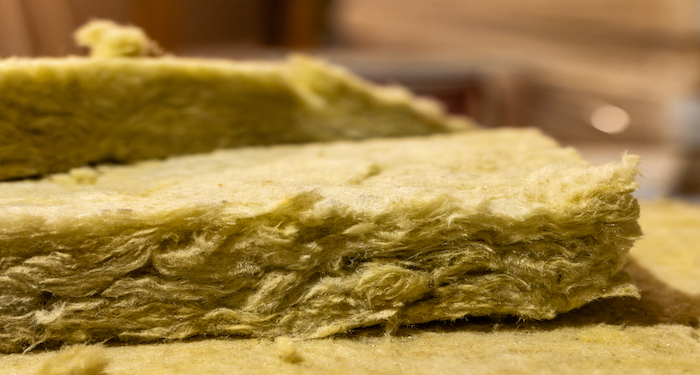
Many people dread spending time in their conservatories because they are "too hot in the summer and too cold in the winter," but instead of starting over and creating a new room or extension, conservatory roof insulation can solve these problems.
Here we will go over the benefits of insulating your conservatory and how it will help you in the long run.
Creates a Space to Use All Year Round
You may prevent heat loss by adding an extra layer of protection between your living space and the weather outside, ensuring that the heating you pay for stays inside your conservatory.
The insulation can help to adjust the temperature in your home during hot summer days, keeping your conservatory nice and cool.
Save Money on Energy Bills
Because you'll now have complete control over the temperature in your conservatory, you'll be able to keep the warm air in during the winter, saving money while creating a comfortable, comforting environment, no matter how cold it gets outside.
Even with a fully insulated tiled conservatory roof, you won't necessarily lose a lot of natural light, so you'll be less dependent on turning on the lights.
Peace and Quiet
The sound of rain might be peaceful and calming at times, but heavy rain or hail is not, and it can be distracting while you're trying to relax with a book, catch up on your favourite TV show, or entertain guests.
Fortunately, adding insulation to your conservatory roof reduces noise in bad weather, which can be rather deafening when using polycarbonate.
Cost-Effective Solution
When you consider the costs of installing a new conservatory, it makes sense to make the most of what you already have while also improving it.
You may save up to 90% on heat loss and eliminate all the usual problems that have plagued your conservatory in the past with an insulated tiled conservatory roof.
How Conservatory Insulation Improves Energy Efficiency
One of the biggest benefits of insulating your conservatory is the significant improvement in energy efficiency. However you use your conservatory, keeping it warm in winter and cool in summer without excessive heating or cooling is crucial for both comfort and cost savings.
Reduces Heat Loss in Winter
Without insulation, a large percentage of heat escapes through the conservatory roof. This is especially true in older glass or polycarbonate structures. Insulated roofs act as a barrier, trapping warm air inside and reducing the need for electric heaters or central heating extensions.
- Minimises cold drafts
- Helps maintain stable indoor temperatures
- Reduces heating bills
Reflects Heat in Summer
Insulated foil layers and thermal barriers also help reflect solar heat away during warmer months. This keeps the conservatory cooler, reduces overheating, and eliminates the need for fans or air conditioning.
- Prevents heat build-up
- Keeps the space comfortable during heatwaves
- Protects furniture from UV damage
Lowers Energy Bills Year-Round
By keeping your conservatory temperature consistant with conservatory insulation, it reduces your reliance on artificial heating and cooling. Over time, this can translate into a noticeable saving on your energy bills.
Contributes to a Greener Home
Using less energy not only saves money but also reduces your carbon footprint. Adding insulation is one of the most effective eco-upgrades for homeowners looking to make their property more sustainable.
- Reduces CO2 emissions
- Improves overall home energy rating
- Supports compliance with UK green home initiatives
Investing in quality insulation is a smart, long-term way to enhance your conservatory’s usability while promoting environmental responsibility and reducing energy waste.
Should I Replace My Conservatory Roof Instead?
You might be wondering whether it's better to insulate your existing roof or just go for a full roof replacement. Here's how to decide.
When is Insulating Better?
- Your conservatory roof is in good structural condition
- You’re looking for a quicker and more affordable solution
- You want to retain the original roof style or appearance
- You want to improve thermal performance without planning permission
When Should You Replace the Roof?
- The roof is leaking, damaged, or over 15 years old
- You want to completely transform your conservatory into a year-round living space
- You need higher energy efficiency than insulation alone provides
- You’re considering a solid tiled roof or glass-to-solid roof conversion
How Much Does It Cost to Remove Conservatory Insulation?
The overall cost of removing roof insulation is likely to be between £500 - £650. This assumes that it will take two craftsmen two days to complete, with each day costing £175. There's additionally £100 set aside for specialised disposal.
Conservatory insulation removal is substantially more expensive than other types of roof insulation removal. Most forms of insulation will cost you around £300 to remove and dispose of safely.
FAQs
Q: What is the best insulation for a conservatory?
A: As a heat reflector, aluminium foil and thermal wadding are the most common. Aluminium foil is a great way to insulate a conservatory roof yourself.
Thermal wadding absorbs heat through air pockets, trapping it and insulating your conservatory effectively—a simple solution to your conservatory problems.
Q: How long does conservatory insulation last?
A: A normally insulated conservatory used to have a ten-year life expectancy, but now buyers can anticipate a uPVC insulated conservatory to last over 25 years with competent fitters, modern installation methods, high-quality materials, and proper maintenance.
Q: Is it worth insulating my conservatory?
A: Insulating your conservatory ceiling can help you save money on your energy bills by making the room more energy efficient.
However, there are additional advantages, such as the reduction of rain noise. Temperature regulation is improved, making it feel cooler in the summer and warmer in the winter.
Q: Can I insulate my conservatory DIY?
A: It is possible to purchase insulated conservatory roof panels and install them yourself.
This isn't impossible to accomplish. The size of the stepped edge must be considered, else the roof panels will either not fit or seem out of place. The additional survey and installation costs are not prohibitively expensive.
Q: What is the most energy-efficient insulate conservatory roof?
A: A solid tiled roof is the best form of conservatory roof for insulation. U values are used to determine how much heat a roof leaks, and the lower the number, the better the heat retention.
Sources
- https://thedampbuster.com/conservatory-roof-insulation-cost/
- https://www.smartconservatorysolutions.co.uk/upvc-finish-conservatory-ceiling
- https://www.smartconservatorysolutions.co.uk/plaster-finish-conservatory-ceiling
- https://www.smartconservatorysolutions.co.uk/news/what-are-the-advantages-of-insulating-your-conservatory-

